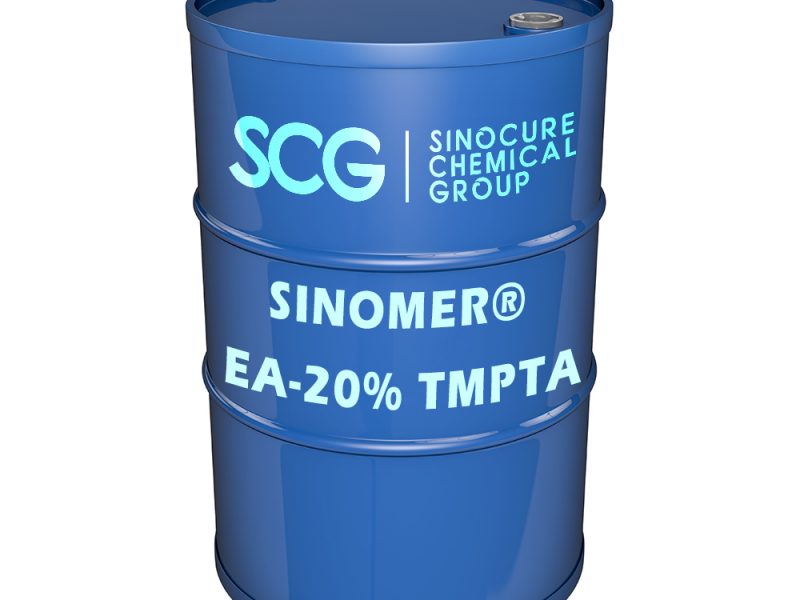
What are the elements in selecting a light-curing resin (UV oligomer) for a light-curing coating formulation?
Light-curing coatings are made with ultraviolet light as the energy source for curing coatings, also known as UV-curing coatings. The coating cures without heating and can be quickly cured into a film on substrates such as paper, plastic, leather and wood. Light-curing coatings are mainly composed of light-curing resins (UV oligomers), photoinitiators, diluents and additives, and color fillers need to be added to the formula when preparing color paints. Light-curing resins are generally low molecular weight resins with unsaturated bonds, such as unsaturated polyesters, acrylic oligomers, etc. In this paper, we discuss the selection of light-curing resins (oligomers) in the formulation of light-curing coatings.
I. Viscosity.
Choose low viscosity resin, can reduce the amount of active diluent. But low viscosity resin often low relative molecular mass, will affect the physical and mechanical properties of the cured film.
Second, the light curing rate.
Generally speaking, the higher the functional degree of light curing resin, the faster the light curing rate, epoxy acrylate light curing rate, amine modified oligomer light curing rate is also fast. It is a very important condition to choose the resin with fast light curing rate, which can not only reduce the amount of photoinitiator, but also meet the requirement of fast curing of light curing coating line.
Third, physical and mechanical properties.
The physical and mechanical properties of the light-curing coating film are mainly determined by the performance of the light-curing resin curing film, and the physical and mechanical properties of different varieties of light-curing coatings are different, and the light-curing resin used is also different. The physical and mechanical properties of the paint film are mainly the following indicators.
Hardness, epoxy acrylate and unsaturated polyester generally high hardness, oligomer containing benzene ring structure is also conducive to improve the hardness. High functionality, high crosslink density, high Tg and high hardness.
Flexibility, urethane acrylic resins, polyester acrylic resins, polyether acrylic resins and pure acrylics are generally more flexible. Oligomers contain aliphatic long carbon chain structure, good flexibility. The larger the relative molecular mass, the better the flexibility. Low crosslink density, good flexibility. low Tg, good flex cut.
Abrasion resistance, urethane acrylic resin has good abrasion resistance. Those with easy formation of hydrogen bonds between oligomer molecules have good abrasion resistance. High cross-link density, good abrasion resistance.
Tensile strength, epoxy acrylates and unsaturated polyesters have high tensile strength, and oligomers with generally higher relative molecular mass, greater polarity, less flexibility and greater cross-linkage have higher tensile strength.
Impact resistance, polyurethane acrylic resin, polyester acrylic resin, polyether acrylic resin and pure acrylate have better impact resistance. Low Tg, flexible oligomers with good impact resistance in general.
Adhesion, oligomers with small shrinkage, good adhesion to substrates; oligomers containing -OH, -COOH and other groups have good adhesion to metals. Oligomers with low surface tension, good wetting and spreading to the substrate, which is conducive to improving the adhesion.
Yellowing resistance, aliphatic polyurethane acrylic resin, polyether acrylic resin and pure acrylate have good yellowing resistance. The addition of suitable anti-yellowing agents in the formula can often effectively improve the yellowing resistance of light-curing coatings.
Chemical resistance, epoxy acrylate, urethane acrylic resin and polyester acrylic resin have good chemical resistance, but polyester acrylic resin has poor alkali resistance; increase the crosslink density during curing, the product chemical resistance is enhanced.
Gloss, epoxy acrylate and unsaturated polyester have higher gloss, crosslink density increases, gloss increases. high Tg, high refractive index of oligomer gloss is good.
Pigment wettability, general fatty acid modified and amine modified oligomers have better wettability of pigments, containing -OH and -COOH oligomers also have better pigment wettability.
Fourth, the light-curing resin (oligomer) curing shrinkage.
Low curing shrinkage is conducive to improving the adhesion of the cured film to the substrate, oligomer functionalities increase, crosslink density increases, curing shrinkage also increases.
Fifth, the oligomer glass transition temperature Tg.
Oligomer Tg high, generally high hardness, good gloss; oligomer Tg low, good flexibility, impact resistance or.
Sixth, toxicity and irritation.
Oligomers due to the relative molecular mass are larger, mostly viscous resin, not volatile, not flammable and explosive items, its toxicity is also low, skin irritation is also low.
